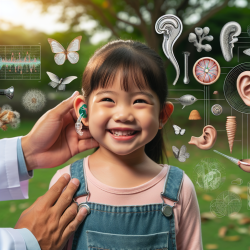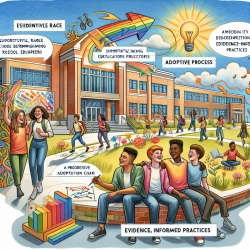Understanding Environmental Sound Recognition in Children with Cochlear Implants
As practitioners in the field of speech-language pathology, our ultimate goal is to create optimal outcomes for children. One crucial aspect of this is understanding how children with cochlear implants (CIs) perceive environmental sounds (ESs). A recent study titled Environmental Sounds Recognition in Children with Cochlear Implants sheds light on this topic, providing data-driven insights that can enhance our therapeutic approaches.
Key Findings from the Study
The study involved 47 prelingually deafened children, aged 4 to 10 years, who were assessed on their ability to recognize environmental sounds using the Sound Effects Recognition Test (SERT). The findings revealed that:
- The average correct recognition was 61.2% for preschoolers and 72.3% for older children, significantly lower than their hearing peers, who averaged 90%.
- No significant correlation was found between ES recognition and receptive vocabulary comprehension.
- Two predictive factors were identified: pre-implantation residual hearing and duration of CI usage, both associated with improved recognition performance.
- Sounds with distinct temporal patterning were easier for children with CIs to identify.
Implications for Practice
These findings underscore the importance of incorporating environmental sound recognition into auditory rehabilitation programs. Here are some actionable steps practitioners can take:
- Emphasize Diverse Auditory Experiences: Encourage natural exposure to a variety of sounds beyond speech stimuli to enhance auditory perceptual progress.
- Utilize Task-Specific Measures: Implement tests that capture the full auditory profile, not just speech recognition, to better monitor progress.
- Incorporate Family-Oriented Training: Consider programs like "The Wonders of the Sounds," which have shown promising results in improving ES recognition through targeted training.
Encouraging Further Research
While this study provides valuable insights, it also highlights the need for further research in several areas:
- Investigate the long-term effects of diverse auditory exposure on ES recognition.
- Explore the potential for cultural and linguistic factors to influence ES perception.
- Develop and validate new tools for assessing non-speech sound recognition in children with CIs.
By focusing on these areas, we can continue to improve our understanding and support of children with cochlear implants, ultimately leading to better outcomes.
To read the original research paper, please follow this link: Environmental Sounds Recognition in Children with Cochlear Implants.










